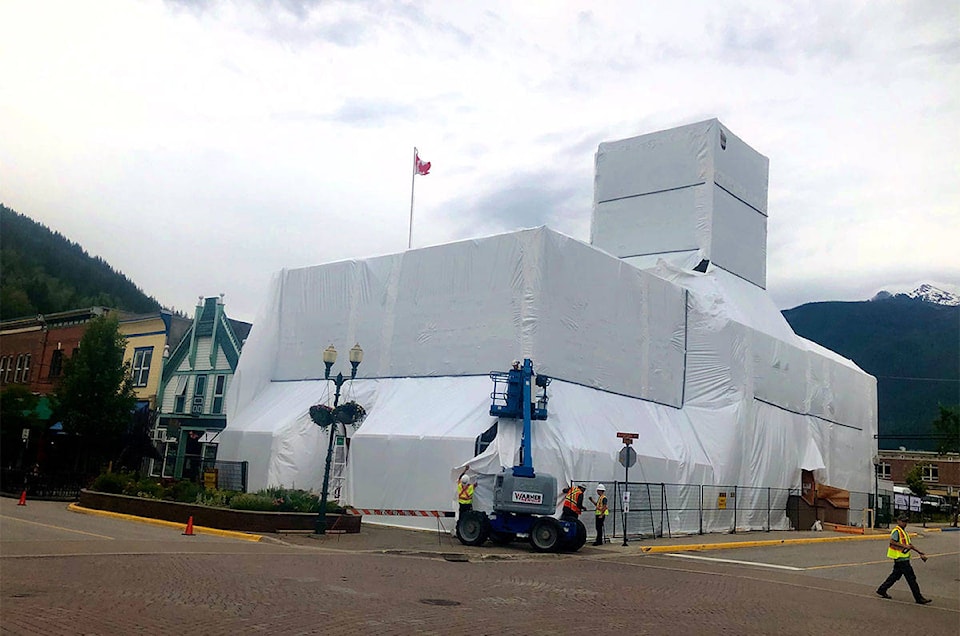Greenhouse gas emissions for Revelstoke’s city operations have decreased by 9.5 per cent since 2007, however, the city is not on track to meet its goal of decreasing 20 per cent by 2020.
In 2007, the baseline year, the city’s emission was 1,427 tonnes of carbon dioxide equivalent. In 2019, the city’s emissions were 1,292 tonnes of carbon dioxide equivalent.
“That’s quite common for municipalities that have grown this much,” said Caitlin Hinton, the city’s climate change coordinator. “So it is nothing to be worried about.”
According to the 2006 census, Revelstoke had a population of around 7,200 people. In 2016, Statistics Canada reported that Revelstoke had a population of around 7,500, however, according to the Telus Insights data collected in 2018, Revelstoke’s population could be closer to 13,000, peaking at more than 14,000 in December.
READ MORE: Revelstoke’s population double what Statistics Canada reports
Since they began measuring in 2007, the city saw an increase in emissions in 2008 and 2009 before they began to slowly decrease, however, they didn’t get below 2007 levels until 2012.
Hinton noted weather is a factor in the city’s emissions; for example, 2007 saw less fuel used in vehicles, as well as less propane used in buildings, as it was a milder year that saw both less snow and lower temperatures in the summer.
| Total greenhouse gas emissions for Revelstoke's city operations have gone down 9.5 per cent since 2007. (City of Revelstoke) |
“It’s good to see that we are not that far off target,” said Mayor Gary Sulz, at the July 14 council meeting. “We’ll keep trying.”
To qualify for the Climate Action Revenue Incentive Program, which provides funding equal to the amount of carbon tax paid by municipal operations, the city is required to report annually on plans and progress towards climate action goals.
Data is gathered on municipal buildings, city-operated vehicles, streetlights, traffic signals, water, wastewater, corporate solid waste, cultural services, fire protection, the Revelstoke Community Forestry Corporation and the Revelstoke Community Energy Corporation.
“Municipalities have influence over roughly 50 per cent of greenhouse gas emissions in Canada,” read the staff report presented to council July 16. “By adopting policies and plans to reduce GHG emissions, the City of Revelstoke can improve the quality of life of residents while saving money in operation and energy costs.”
Next steps for the city include staff looking at corporate operations through a corporate emissions strategy update as well as updating the Community Energy and Emissions Plan, which was last updated in 2011.
The plan will evaluate the city’s current emissions, and project future scenarios to provide recommendations to reduce emissions. A new target will be established during this process, which will be incorporated into the Official Community Plan.
Population projections will also be a part of the planning process to better anticipate possible growth and expansion of municipal buildings that could be required as the population grows.
The city has and will continue to upgrade buildings with energy-efficient heating and lighting, perform energy audits and use the Revelstoke Community Energy Corporation’s biomass system to provide heat for the community centre, aquatic centre and city hall.
READ MORE: City of Revelstoke company owes millions
The current city hall refurbishment project, which includes window and siding replacement, is also anticipated to increase energy efficiency in the building.
READ MORE: City hall refurbishment comes in nearly $500,000 over budget
@JDoll_Revy
jocelyn.doll@revelstokereview.com
Like us on Facebook and follow us on Twitter.
